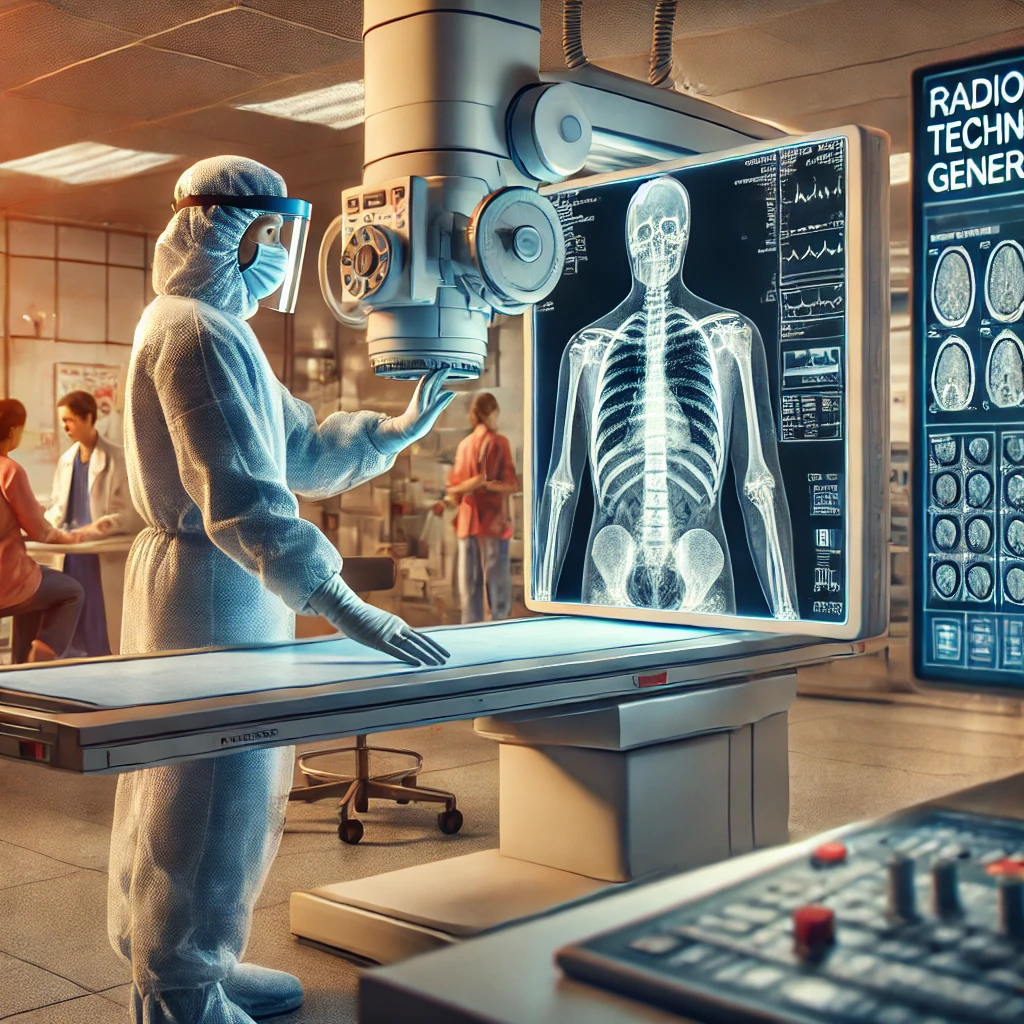Radiologic technology is a field dedicated to medical imaging, using technologies like X-rays, CT scans, and MRI to help diagnose and treat patients. A radiologic technology general program trains students to become skilled professionals who can safely and accurately produce medical images. This article will provide an overview of what a radiologic technology program entails, its key components, and why it’s a promising career choice.
Table of Contents
What is Radiologic Technology?
Definition
Radiologic technology involves the use of medical imaging to diagnose diseases, injuries, and abnormalities in the body. Radiologic technologists, also known as radiographers, operate complex imaging equipment to capture images of bones, tissues, and organs. These images help physicians make informed decisions about patient care.
Role of a Radiologic Technologist
Radiologic technologists work directly with patients, ensuring their safety and comfort during imaging procedures. They follow strict guidelines to protect both themselves and patients from excessive exposure to radiation. In addition to operating imaging machines, they are responsible for maintaining equipment and keeping detailed records of the procedures.
Overview of a Radiologic Technology General Program
Program Structure
A radiologic technology general program typically takes two years to complete and results in an associate degree. Some programs may also offer bachelor’s degrees. The curriculum is a mix of classroom instruction, laboratory work, and clinical experience. Students learn both the theoretical and practical aspects of radiologic technology.
Core Subjects
The core subjects in a radiologic technology program include anatomy, medical terminology, radiation physics, and patient care. These courses equip students with the knowledge required to understand the human body, the technology they will be working with, and how to safely interact with patients.
- Anatomy and Physiology: Understanding the human body’s structure and function is essential for capturing accurate images.
- Radiation Protection: Learning how to minimize radiation exposure is critical for patient and technologist safety.
- Imaging Techniques: Students are trained in various imaging methods, such as X-rays, computed tomography (CT), and magnetic resonance imaging (MRI).
Clinical Training
Clinical training is a vital component of a radiologic technology program. Students work in hospitals or imaging centers under the supervision of licensed radiologic technologists. This hands-on experience allows students to apply their classroom knowledge in real-world settings. They learn how to position patients, operate imaging machines, and produce high-quality images.
Skills and Qualifications Needed
Technical Skills
Radiologic technologists need to be comfortable working with sophisticated medical equipment. They must be able to operate machines, troubleshoot issues, and ensure that images are clear and accurate. Understanding how to maintain and calibrate equipment is also important.
Communication and Patient Care
In addition to technical skills, radiologic technologists must have strong communication skills. They explain procedures to patients, help them feel comfortable, and ensure they are in the correct position for imaging. Empathy and patience are crucial when working with patients who may be anxious or in pain.
Attention to Detail
Radiologic technologists must have a keen eye for detail. They need to follow precise instructions from doctors regarding what areas to image. Additionally, they must ensure that images are clear and accurate, as poor-quality images can lead to misdiagnosis.
Career Opportunities in Radiologic Technology
Job Outlook
The demand for radiologic technologists is growing due to the increasing need for diagnostic imaging in healthcare. According to the U.S. Bureau of Labor Statistics, the employment of radiologic technologists is projected to grow by 7% from 2021 to 2031. This growth is driven by the aging population and advancements in medical imaging technology.
Work Environments
Radiologic technologists can work in a variety of healthcare settings, including hospitals, clinics, diagnostic imaging centers, and physician’s offices. Some technologists specialize in specific areas, such as mammography or MRI, allowing for further career development.
Salary Expectations
The average salary for a radiologic technologist varies depending on location, experience, and specialization. In the United States, the median annual salary is approximately $63,710, with opportunities for advancement as technologists gain more experience or pursue further certifications.
Conclusion
A radiologic technology general program is an excellent path for individuals interested in healthcare and technology. This program provides the skills needed to operate advanced imaging equipment, interact with patients, and contribute to the diagnostic process in medicine. With growing demand and opportunities for specialization, a career in radiologic technology offers both job security and personal fulfillment.
